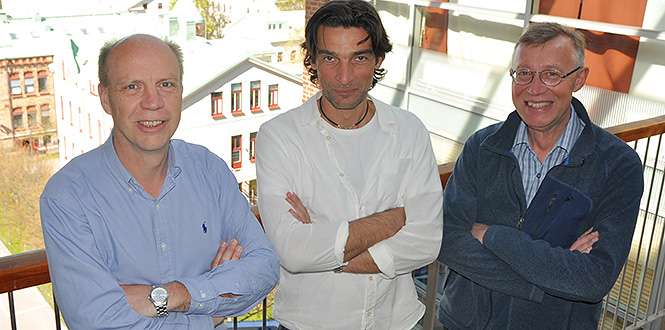Sights set on record-breaking transmission speed

Work is at fever pitch at the Microwave Electronics Laboratory at MC2. Their goal? To find solutions for high-speed wireless communication. "We're aiming for record speed in the field," says Professor Herbert Zirath, head of the research team.
The information society is well and truly here. Transmission speeds continue to increase, with no end in sight.
"People want faster downloads, while at the same time more and more people are connecting to the Internet," Zirath says. "They say there are 50 billion connected devices today. That means an ever greater need for transmission speed, quality of service and latency."
Software development is much talked-about in this context, but if all of our future visions are to come to fruition, we also need to develop new, energy-efficient hardware.
"We're developing the electronics needed for data communications in the future," Zirath explains. "Our 100 G project is about developing fully electronic transmitter and receiver modules for spectrum and energy-efficient wireless communication and transmission speeds of up to 100 Gbps."
Higher frequency band
After two years, the research team is at a halfway point, and has already demonstrated half of the target transmission speed.
"We've been able to integrate the necessary features to build this type of radio components," Zirath says.
"One key challenge is the encapsulation of the chip itself. Usually wire bonding is used for encapsulation, but that reduces the bandwidth, which makes it impossible to transfer the desired amount of data. Our goal is to create a microwave hop of about a kilometre."
He points out that the development of new hardware also paves the way for a frequency band of over 100 GHz.
"These frequency bands have not yet been regulated for radio links, but Ericsson and other telecom companies are working hard at it. In that context, our results are critical. We've shown that you can make hardware, electronic circuits, that can achieve the features of a high-frequency band."
Within three years, Zirath is convinced that the project will have met its goal of delivering transmission speeds of up to 100 Gbps.
"By then we will have managed to develop the circuits, antennas and signal processes necessary to investigate completely new applications in the 100 GHz–500 GHz frequency band," he concludes.
Microwave Electronics Laboratory
Hundreds of gigahertz of bandwidth are currently unused and available for wireless communication, radar and sensor applications in the 100 GHz–500 GHz frequency band (called the THz range). Traditional components for this frequency range are expensive, unwieldy and require significant amounts of energy. This multidisciplinary project is developing a whole new technological platform that combines the expertise to design complex circuitry for this frequency range with the design of antennas, encapsulation and systems. The project is supported by the Swedish Foundation for Strategic Research.
Provided by Chalmers University of Technology



















